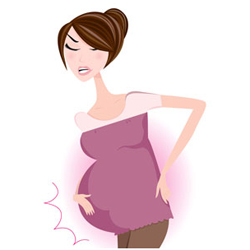How to distinguish true labor pain and false labor pain?

What Do False labor or Braxton Hicks Contractions Feel Like?
Some women describe Braxton Hicks contractions or false pain as tightening in the abdomen that comes and goes. Many women say they feel like mild menstrual cramps. Unlike true labor, these contractions are usually not painful and do not happen at regular intervals. They do not get closer together, do not increase with walking, do not last longer as they go on, and do not feel stronger over time as they do when you are in true labor.
What Do True Labor Contractions Feel Like?
True labor feels different for every woman. It may even feel different from one pregnancy to the next. Labor contractions cause discomfort or a dull ache in your back and/or lower abdomen, along with pressure in the pelvis. Some women may also feel pain in their sides and thighs. Some women describe contractions as strong menstrual cramps, while others describe them as strong waves that feel like diarrhea cramps.
How Do I Know When Contractions Indicate True Labor?
To figure out if the contractions you are feeling are the real thing and you're going into labor, ask yourself the following questions.
How often do the contractions happen?
- False Labor: Contractions are often irregular and do not get closer together.
- True Labor: Contractions come at regular intervals and last about 30-70 seconds. As time goes on, they get closer together and stronger.
Do they change with movement?
- False Labor: Contractions may stop when you walk or rest, or may even stop if you change positions.
- True Labor: Contractions continue despite movement, rest, or changing positions.
How strong are they?
- False Labor: Contractions are usually weak and do not get much stronger. Or they may be strong at first and then get weaker.
- True Labor: Contractions steadily increase in strength.
Where do you feel the pain?
- False Labor: Contractions are usually only felt in the front of the abdomen or pelvis.
- True Labor: Contractions are more intense and may start in the lower back and move to the front of the abdomen. Or they may start in your abdomen and move to your back. If you have signs of true labor, contact gynecologist immediately. If you're not sure, call your gynecologist anyway. If you are having any of the following, you may be in true labor.
- Contractions every 10 minutes or more than five contractions in an hour
- Regular tightening or pain in your back or lower abdomen
- Increasing pressure in the pelvis or vagina
- Menstrual-like cramps
- Bleeding
- Fluid leak
- Flu-like symptoms such as nausea, vomiting, or diarrhea If you are having Braxton Hicks contractions, you really don't need to do anything unless they are making you uncomfortable. If they are, try the following:
- Take a walk. False labor contractions often stop when you change position or get up and walk.
- Get some sleep or rest.
- Relax.
- Drink water.
- Eat a snack or small meal.
- Get a massage.
|